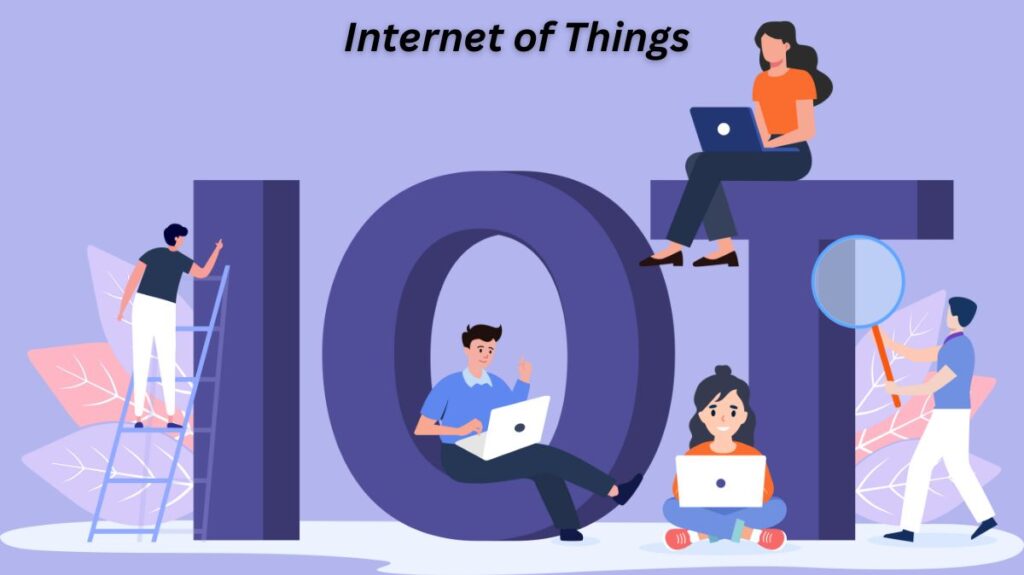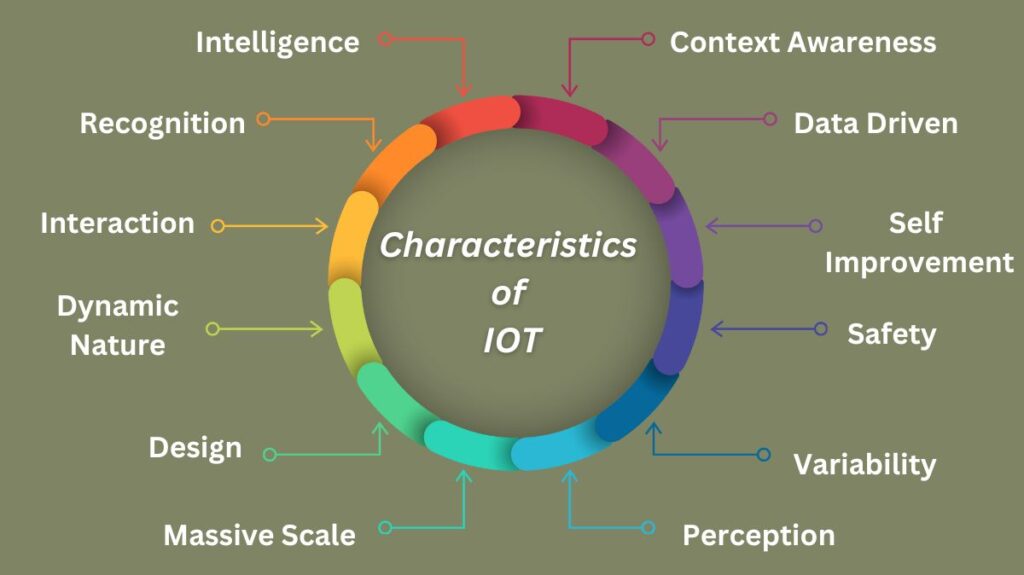This blog discusses the definition of IoT as well as its fundamental features, which include connectivity, sensing, data processing, AI , and more. Understand the Key characteristics of IOT (Internet of Things) to revolutionize daily life and industries.
Define IOT

The collective network of connected things and the technology that permits communication between devices and the cloud, as well as between devices, are referred to as the Internet of Things, or IoT. The advancement of low-cost computer chips and high-bandwidth telephony has allowed us to link billions of things to the internet. This implies that commonplace appliances like vacuums, vehicles, machinery, and toothbrushes can employ sensors to gather information and react to consumers in a clever way.
Common “things” are connected to the internet through the Internet of Things. Computer experts have been adding sensors and processors to everyday objects since the 1990s. However, development was initially sluggish due to the chips’ size and weight. Low-power computer chips called RFID tags were initially used to track pricey equipment. As computer equipment got smaller over time, these processors become faster, smaller, and smarter.
Characteristics of IOT (Internet of Things)

- The capacity for intelligence
- Identity
- Interconnection
- Dynamic Architecture of Nature
- Massive Scale Sensing
- Variability
- Safety
Intelligence
Internet of Things intelligence comes from algorithms, processing, software, and hardware. Ambient intelligence helps IoT devices respond to situations and complete tasks. Although intelligent technologies have gained popularity, their use in the Internet of Things is limited to device interaction. On the other hand, graphical user interfaces and conventional input techniques are used to establish contact between the user and the device.
Recognition
An important part of loT is giving the device a personality. Identity enables us to choose which device to send the order to and differentiate between several internet devices. The level of control needed for each device varies according to the sort of data it produces. Giving each device a unique identity is crucial so that we can configure passwords and other security features. Among the security mechanisms employed to protect the numerous identifying devices are fingerprints, facial recognition IP addresses, and facial lock systems.
Interaction
The Internet of Things is made possible by connectivity, which links commonplace things. Connectivity is essential because basic object-level interactions in an IoT network contribute to collective intelligence. Device interoperability and network connectivity are made possible by it. With this connectivity, the networking of smart devices and apps can open up new business opportunities for the Internet of Things.
Dynamic Nature
Data collection from the environment is the main purpose of the Internet of Things. The dynamic changes surrounding the devices are used to collect the data. These devices’ states, such as when they are sleeping or waking up, connected or disconnected, and their context such as temperature, location, and speed all fluctuate dynamically.
Design
A hybrid IoT infrastructure should enable participation from several manufacturers. Therefore, nature cannot be uniform. IoT is not a branch of engineering. IoT arises when multiple disciplines come together.
Massive Scale
There will be a lot more gadgets that need to be coordinated and managed than there are today connected to the Internet. It is therefore more crucial than ever to manage and analyze the data these devices generate for application reasons.
Perception
The Internet of Things relies heavily on sensors that measure or detect changes in their surroundings in order to produce data that can report on their state or even interact with the environment. The creation of capabilities that accurately represent a knowledge of the physical environment and its inhabitants is made possible by sensing technologies. Sensing data can offer a profound understanding of our complex reality, despite being analogue input from the physical world.
Variability
Heterogeneity is one of the important features of the Internet of Things. Many hardware platforms and networks constitute the foundation of Internet of Things devices, which can connect to other devices or service platforms via a variety of networks. IoT architecture should facilitate direct network communication between heterogeneous networks. The fundamental design requirements for heterogeneous objects are scalability, modularity, extension, and interoperability.
Safety
IoT devices are susceptible to cyberattacks by nature. While the Internet of Things offers efficiency, novel experiences, and other advantages, it is a mistake to ignore security issues. IoT raises a lot of privacy and transparency issues. A security paradigm must be developed in order to secure networks, endpoints, and the data that is transferred between them.
Self Improvement
IoT’s artificial intelligence allows it to update itself without human help. The characteristic of self-improvement or upgrade is particularly vital because regular software updates are essential. Also, if the setup is already finished, the technology might start working right away.
Data Driven
Data-driven IoT can change businesses to become more resilient, modular, and capable of adjusting to new business models, procedures, and goods before the competition and market trends do, in addition to giving them a major competitive edge.
Massive amounts of data are collected by IoT devices and systems via sensors and other sources. This data may then be evaluated and utilized to inform decisions.
Context Awareness
Internet of Things (IoT) context-awareness is crucial. Context awareness means understanding and responding to one’s environment and context. The context includes information about a person, device, or application.
Situation awareness lets IoT systems and devices make decisions and respond accordingly.
